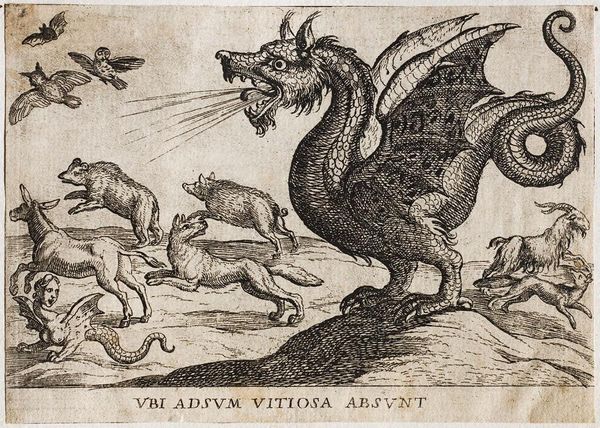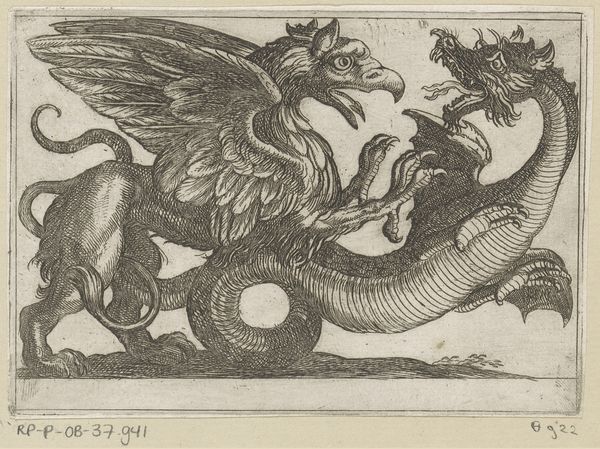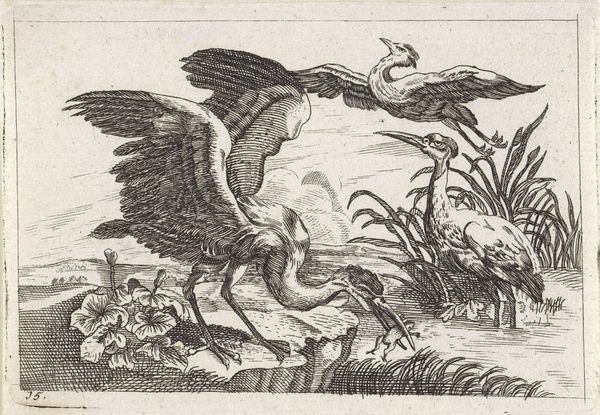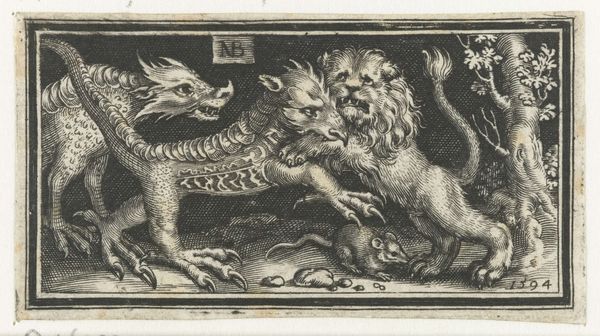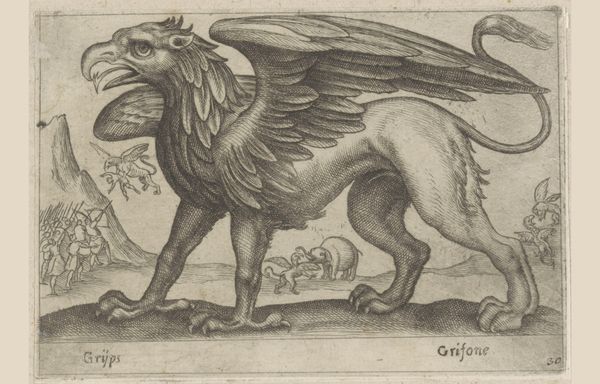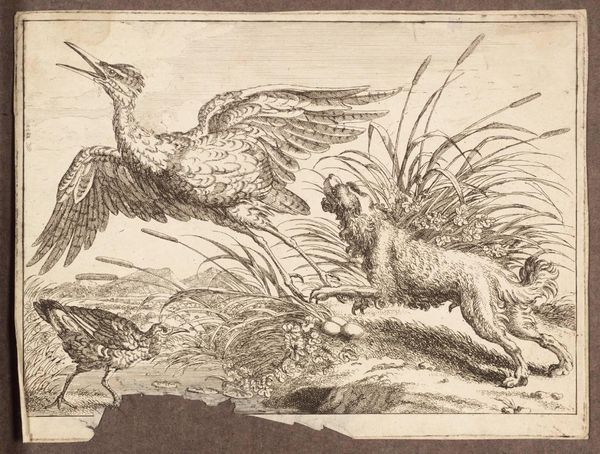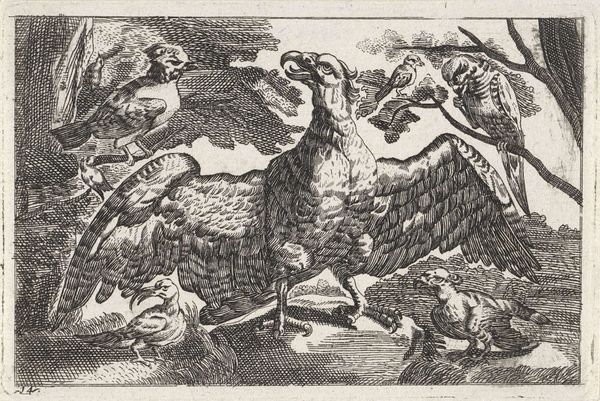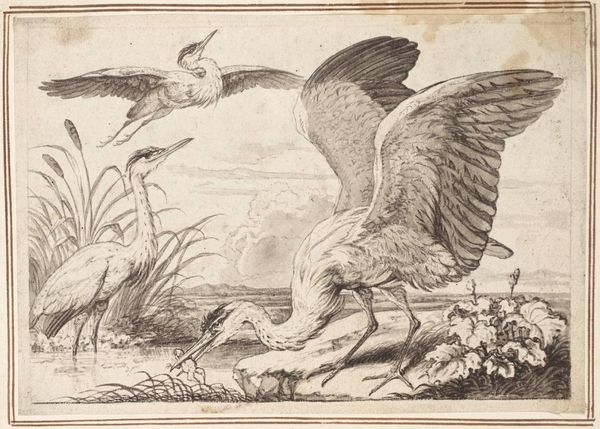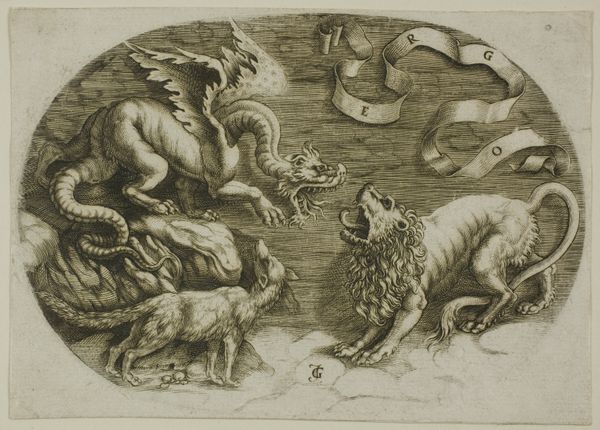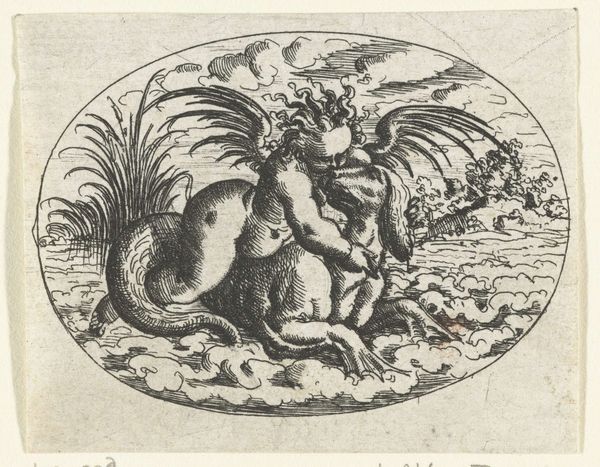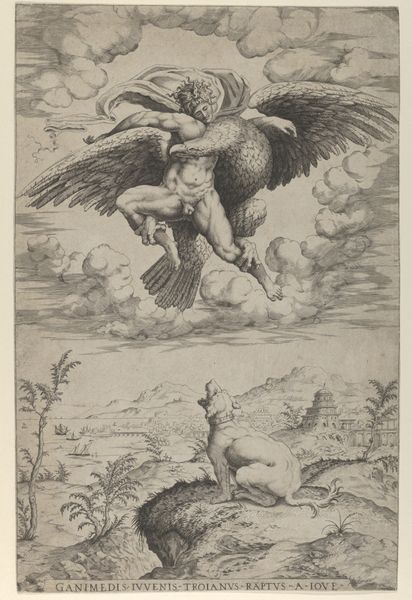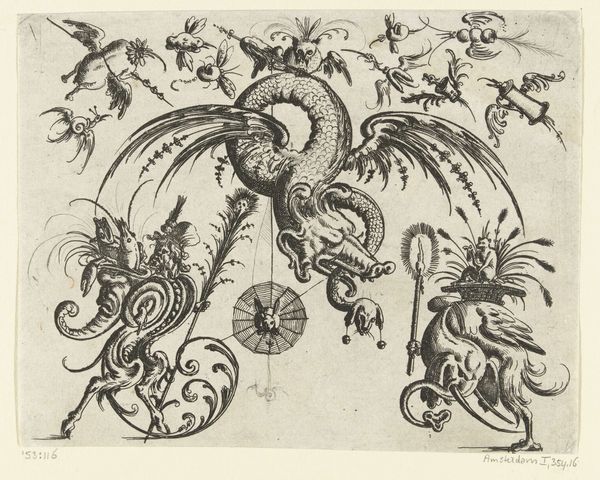
print, engraving
#
baroque
# print
#
old engraving style
#
fantasy-art
#
figuration
#
history-painting
#
engraving
Dimensions: height 93 mm, width 131 mm
Copyright: Rijks Museum: Open Domain
Curator: Antonio Tempesta's engraving, "Een draak jaagt andere dieren weg," created around 1600, presents a scene of chaos. My initial impression is how unsettlingly alive everything seems, despite being rendered in stark lines. There’s a real sense of panicked movement. Editor: Absolutely, the dynamic composition immediately grabs you. I am interested in the dragon itself; how Tempesta structures it with such assertive lines that it immediately occupies the viewer’s focus and evokes feelings of danger and power. Tell me more about the overall symbolic structure here? Curator: Well, on a purely visual level, observe the use of diagonals, creating a sense of instability. The contrast between light and shadow amplifies the dramatic effect, leading our eye around the composition, chasing after those fleeing creatures. And don’t overlook the Latin inscription at the bottom—'VBI ADSVM VITIOSA ABSVNT’ Editor: Ah yes, “Where I am, vices are absent.” That shifts things considerably. Given the era, this isn’t just about aesthetic qualities or the beauty of linear technique; it reflects contemporary social and moral anxieties. It seems the dragon serves as an enforcer of morality, chasing away vice represented by those fleeing animals and figures. But is the dragon benevolent or just another form of oppressive power? Curator: It's this ambiguity that fascinates. Note how the dragon, rendered with painstaking detail, becomes this compelling figure – terrifying yet fascinating. The textures, achieved through careful hatching and cross-hatching, contribute to a visual intensity that demands attention, no matter how complicated the symbolic context becomes. The animals, by contrast, are only partially delineated, enhancing that chaotic movement that you recognized straight away. Editor: Precisely. I find this speaks to ongoing debates about who gets to define virtue, and who is punished. Considering Tempesta’s background, were these notions being influenced by religious reforms or local political disputes? Or perhaps wider tensions present within colonial dynamics. Curator: These are pertinent questions for contextualising the work, and seeing as it remains open to multiple interpretations and engaging on many levels, perhaps we are looking at an enduring emblem for debate and reflection. Editor: Indeed. The dragon seems poised to ignite ongoing discussions about power, morality, and our anxious relationship with both, hundreds of years later.
Comments
No comments
Be the first to comment and join the conversation on the ultimate creative platform.

